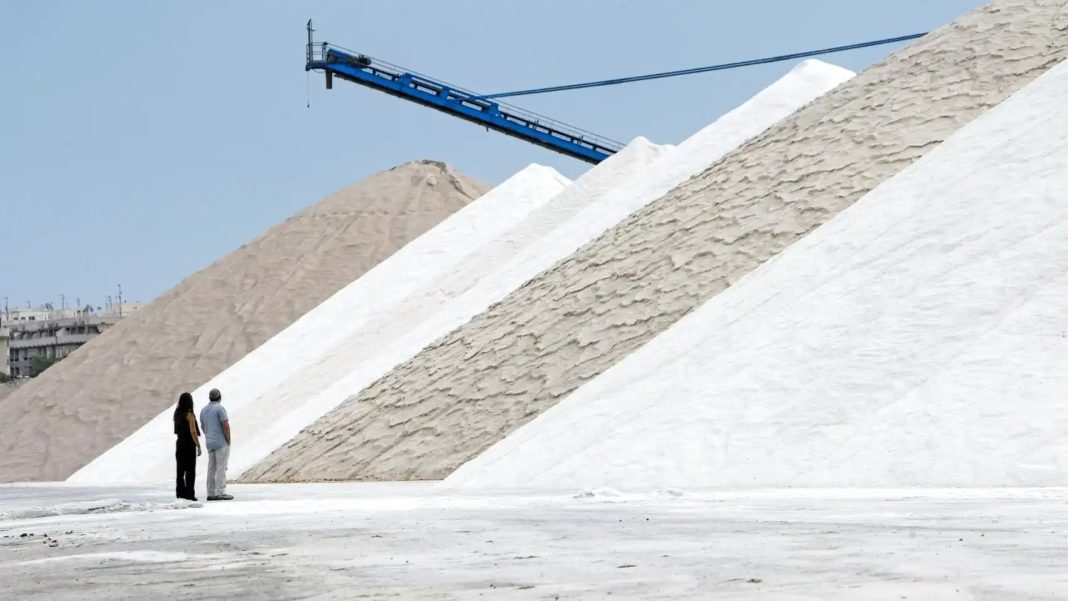Whilst the agriculture sector is suffering the effects of high temperatures in Spain this summer, salt production has seen a boost and the consequent evaporation process has triggered the harvest of the main salt mine in Spain, the Salinas de Torrevieja (Alicante), which forecasts a harvest of around 550,000 tons.
The head of production at Salinas de Torrevieja, Luis Díez, explained that after a few years of more rain than usual in the area, which reduced production to between 300,000 and 350,000 tons, this year it is expected to return to the usual figure of the 550,000.
The high heat of July, August and the first half of September, especially in the minimum values with the vast majority of nights with tropical temperatures (over 20 degrees Celsius), has led to “excessive evaporation” which has benefited the farm because, according to Díez, “it accelerated the crystallisation of a salt and that it is of higher quality”.
The weather situation has allowed the thickness of the sheets of salt to be around 100 or 110 millimetres, a figure short of the optimum of 120, but significantly better than that achieved in recent years. between 50 and 80.
“This thickness benefits us because it saves us harvesting times and helps increase production,” said Díez.
Due to the orographic characteristics of these large salt flats, in the middle of a natural park, the salt is collected “wet”, that is, by means of a boat that cuts the salt slabs from the bottom and brings them to the surface to be later collected by other barges to the storage area.
Once there, the salt is washed and stored before being directed to its final market, which is usually the food industry, the chemical industry or de-icing of roads both in the rest of Spain and in several countries in northern Europe and, even the United States.
For this, the salt is transported in large-tonnage trucks to the north of the continent or shipped in bulk ships through the port of the city of Torrevieja.





